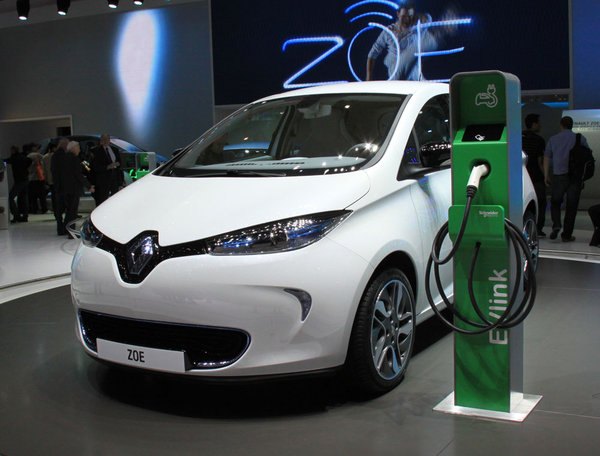European Automakers Face Challenge From New Emissions, Fuel Economy Tests
Already facing financial challenges under a weak home economy, European automakers may soon have a new challenge to add to the list when the European Union adopts a more accurate method of testing CO2 emissions and fuel economy among their lineups, with EVs becoming the biggest beneficiaries as a result.
Automotive News Europe reports the EU will do away with the New European Drive Cycle test in 2017, adopting the United Nations’ World Light Vehicle Test Procedure for its higher accuracy than the outgoing testing method. Automakers want the WLTP delayed until 2020, citing cost increases for the reason; French bank Exane BNP Paribas estimates automakers would add €1000 ($1,356 USD) per vehicle to help recoup investment costs into adapting to the new testing standards.
The new test, which is designed to better accurately account for modern driving conditions, would push past the NEDC’s 2021 mandate of 95 grams of CO2 per kilometer by as much as 20 percent, NOx emissions also boosted among diesel offerings under the WLTP. Exane analyst Stuart Pearson noted the increased reduction goal would reflect in the industry’s bottom line:
Should the new test cycle lead to emissions say 20 percent above that on NEDC, then assuming a 30 euro per gram cost of CO2 technology, the incremental cost for the EU industry would be around 11 billion euros.
Automakers with margins below that needed to meet compliance — including Fiat, Renault and Peugeot — will struggle more than the well-off German manufacturers, while suppliers who provide parts needed to boost fuel efficiency will be the biggest winners. The standards could also boost sales of hybrids and EVs, while diesels slide in kind.
Seattle-based writer, blogger, and photographer for many a publication. Born in Louisville. Raised in Kansas. Where I lay my head is home.
More by Cameron Aubernon


































Comments
Join the conversation
It appears the EU will have extremely similar emission regulations for their diesels as the US. I will be interested to see the difference in the way the emission management systems on the EU cars in comparison to the US diesel vehicles since the EU uses a better quality diesel than the US. Another factor that will rear it's ugly head for GDI engines is an issue that was raised here on TTAC a while ago regarding particulates from GDI engines. From research it seems a GDI engine emits on average 10 times the particulates as a comparable diesel. I can't forsee GDI becoming passé since they have provided reasonable improvement in FE and CO2 emissions. Are gasoline engines going the way of the diesel and will require a DPF?
Anyone who thinks electric cars are zero emission vehicles (even in the unlikely event their electricty came from solar panels) needs a lesson in electricity production emissions. Simplifying, not because I believe carbon emissions are particularly worrisome, but because the data is easily found, allowing for quick comparisons.On average, 22 ounces of CO2 is produced generating 1 kWhr of electricity, net, at the consumer's wall outlet. Gasoline consumption in a modern car produces roughly 310 ounces of CO2 per gallon. The Tesla Model S gets roughly 2.4 miles per kWhr, town, 2 miles per kWhr Interstate highway travel, due to the fact that its 85 kWhr battery requires 100 kWhrs of electricity to fully charge, and highway range is roughly 200 miles and around-town 240 miles. Highway, the Tesla produces 11 ounces CO2 per mile, 9.2 ounces CO per mile , town. Conclusion : any gasoline powered vehicle that gets either 28 MPG or above, highway, or 33.6 MPG or greater, combined is every bit as much a zero emission vehicle as a Tesla Model S. The Tesla owner pays no road taxes, and at 4700 pounds, produces greater than average road wear and tear. Tesla owners receive $7500 Fed tax writeoffs and often the same amount from the state, and California requires other automakers (actually their customers) to pay Tesla Motors thousands of dollars for each vehicle Tesla makes. Average sales price of the Model S exceeds $85,000.
Back on topic: CO2, in this context, is used to measure the energy content of the fuel. In other words, CO2=MPG. It's a different way of measuring mileage, one which takes into account a fuel's energy density (mostly gas or diesel, but also E85, NG, etc). Europe is transitioning from the NEDC test cycle to the WLTP test cycle. Given that NEDC is notoriously optimistic, this will be an improvement. The US EPA has a different (and arguably better) test cycle, one that is measured in grams of CO2 per mile, and then converted to MPG before results are published. Why are Europeans obsessed with CO2? Because they import almost all of their oil. As far as pollution is concerned, stay tuned. Word is that very strict particulate Euro emissions standards are in the works, much stricter than the current Euro6. European voters are fed-up with being told that they have strict standards on one hand, and having poor air quality on the other.
Can't the Euros cut themselves a little slack for shrinking their own population? Sure, the muslim enclaves they've encouraged breed like misogynist savages but how much individual vehicle use do those represent?